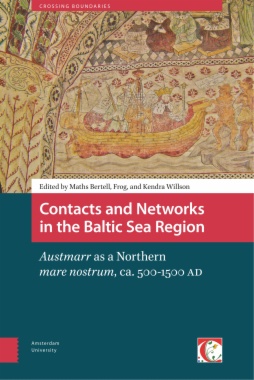Since prehistoric times, the Baltic Sea has functioned as a northern mare nostrum — a crucial nexus that has shaped the languages, folklore, religions, literature, technology, and identities of the Germanic, Finnic, Sámi, Baltic, and Slavic peoples. This anthology explores the networks among those peoples. The contributions to Contacts and Networks in the Baltic Sea Region: Austmarr as a Northern mare nostrum, ca. 500-1500 ad address different aspects of cultural contacts around and across the Baltic from the perspectives of history, archaeology, linguistics, literary studies, religious studies, and folklore. The introduction offers a general overview of crosscultural contacts in the Baltic Sea region as a framework for contextualizing the volume’s twelve chapters, organized in four sections. The first section concerns geographical conceptions as revealed in Old Norse and in classical texts through place names, terms of direction, and geographical descriptions. The second section discusses the movement of cultural goods and persons in connection with elite mobility, the slave trade, and rune-carving practice. The third section turns to the history of language contacts and influences, using examples of Finnic names in runic inscriptions and Low German loanwords in Finnish. The final section analyzes intercultural connections related to mythology and religion spanning Baltic, Finnic, Germanic, and Sámi cultures. Together these diverse articles present a dynamic picture of this distinctive part of the world.
- Cover
- Table of contents
- Preface
- Introduction
- Looking across the Baltic Sea and over linguistic fences
- Frog, Kendra Willson, and Maths Bertell
- Section 1. Mental maps
- 1. The northern part of the Ocean in the eyes of ancient geographers
- 2. Austmarr on the mental map of medieval Scandinavians
- 3. The connection between geographical space and collective memory in Jómsvíkinga saga
- Section 2. Mobility
- 4. Rune carvers traversing Austmarr?
- 5. Polish noble families and noblemen of Scandinavian origin in the eleventh and twelfth centuries
- The case of the Awdańcy family: by which route did they come to Poland and why?
- 6. A medieval trade in female slaves from the north along the Volga
- Section 3. Language
- 7. Ahti on the Nydam strap-ring
- On the possibility of Finnic elements in runic inscription
- 8. Low German and Finnish revisited
- Section 4. Myth and religion formation
- 9. Mythic logic and meta-discursive practices in the Scandinavian and Baltic regions
- 10. The artificial bride on both sides of the Gulf of Finland
- The Golden Maiden in Finno-Karelian and Estonian folk poetry
- 11. Local Sámi bear ceremonialism in a Circum-Baltic perspective
- 12. Mythologies in transformation
- Symbolic transfer, hybridisation, and creolisation in the Circum-Baltic arena (illustrated through the changing roles of *Tīwaz, *Ilma, and Óðinn, the fishing adventure of the thunder god, and a Finno-Karelian creolisation of North Germanic religion)
- Contributors
- List of maps, figures and tables
- Maps
- Map 1 Routes of the oceanic voyages of Odysseus, marked with an unbroken line; the Argonauts, marked with a dotted line; and Hercules, marked with a dashed line
- Map 2 The contours of Eurasia according to ancient ideas. The dashed line superimposed on a modern map indicates generally conceived limits of cartographic space.
- Map 3
- Figures
- Figure 1 U614
- Figure 2 Runestones associated with Gotland by inscription or ornament
- Figure 3 Runic monuments classified as Gräslund’s style group Pr4 (ca. ad 1070-1100) according to Samnordisk runtextdatabas 2.7
- Figure 4 G373 Sproge
- Figure 5 G203 Hogrän
- Figure 6 Application of the function Groove Measure on a rune
- Figure 7
- Figure 8 Result of analysis: The Pr2-group
- Figure 9 Result of analysis: The Pr3-group
- Figure 10 Result of analysis: The Pr4-group
- Figure 11 Coat of arms of the Awdańcy family
- Figure 12 The Nydam strapring
- Figure 13 The Idols of Thor
- Figure 14 Herrad of Landsberg’s depiction of God catching Leviathan from Hortus Deliciarum (folio 84r, late twelfth century). God is depicted above with a fishing rod, of which the fishing line represents a so-called Tree of Jesse, the patrilineal line o
- Tables
- Table 1 Sources for the relationship between Gotland and the Swedish mainland in the eleventh century
- Table 2 Numbers of ethnic denotations in the Kazan’ region tax register of 1602-1603
- Table 3 The drums from Manker (1938) used in this study, numbered from south to north, with date of first mention and indications of type of decoration

